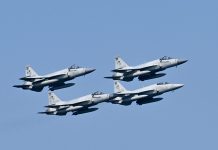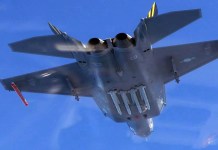Sunita Williams, an Indian-origin astronaut, is stuck in space due to a faulty Boeing Starliner. As NASA postpones bringing Williams and another astronaut back to earth for the fourth time, it brings memories of another Indian-origin astronaut, Kalpana Chawla, whose ride back home ended in a tragedy.
Williams and Barry Wilmore are stuck in space. The two astronauts arrived at the International Space Station on June 7 after their launch from Florida two days earlier. They are part of Boeing’s Crew Flight Test – a debut mission with humans. They were supposed to be in space for eight days, but their return has been postponed indefinitely.
The delay comes after five helium leaks were detected on board the spacecraft. Helium supports the spacecraft’s reaction control system (RCS) thrusters, allowing them to fire.
The Starliner is Boeing’s maiden attempt to break into the commercial human-space transport business, where Elon Musk’s SpaceX has a lead. SpaceX has been sending humans to space since 2020.
Boeing has been facing a lot of flak for dereliction in quality control. In January, a door plug came off a Boeing 737 Max 9 Alaska Airlines jet at 16,000 feet, resulting in a gaping hole in the plane. Since then, Boeing whistleblowers have testified, alleging Boeing to cut corners regarding maintaining quality. The company is yet to comment if the Starliner being stuck is also a fallout of substandard technology.
This is not William’s first trip to space. She was selected by NASA in 1998 and spent 322 days in space before the Starliner project. She is a former US Navy officer and a record holder for the most number of SpaceWalks.
“The issue highlights that no amount of planning and testing will hold for all scenarios. Such a complex mission has no place for intellectual hubris. Ideally, we should be trained organisationally. But presently, it is only our flying training that will see us through,” one of the Indian astronaut designates told the EurAsian Times. The astronaut-designates chosen by India are all fighter pilots from the Indian Air Force (IAF).

Kalpana Chawla’s Space Odyssey
Kalpana Chawla was the first Indian-born American woman to go to space in 1997. Born in Karnal, Haryana (India), Chawla’s space odyssey fuelled the dreams of thousands of girls across the country.
Six years later Chawla was selected as the mission specialist on STS-107. On February 1, 2003, Chawla died when the space shuttle Columbia broke up on re-entry into Earth’s atmosphere, killing all seven astronauts on board. The entire country plunged into grief.
2003 was proving to be a golden year for the US Space Agency (NASA). Six space shuttle missions were planned, five of which would continue the construction of the ever-growing and permanently occupied International Space Station.
STS-107, onboard NASA’s oldest orbiter, Columbia, was the first shuttle mission dedicated to microgravity to fly a 16-day solo mission. The seven-member crew conducted over 80 experiments in the Spacehab Double Research Module in Columbia’s payload bay, following a tight shift schedule to ensure the experiments never stopped. The experiments yielded valuable scientific insights.
According to NASA, the STS-107 crew tested technology that NASA wanted to recycle water on the young International Space Station. They also analyzed how insects and fish respond to spaceflight; another suite of experiments studied the sun.
During their return flight on February 1, 2003, the space shuttle disintegrated, killing all seven astronauts onboard. NASA launched an investigation into the tragedy and gave a 400-page “Columbia Crew Survival Investigation Report.”
The report revealed that the ill-fated crew had a period of just 40 seconds between the loss of control of their spacecraft and its de-pressurization that led to their death.
Investigators found that during Columbia’s January 16 launch, a fragment of foam insulation from the shuttle fuel tank punctured the heat shielding that protected the left wing edge. Due to the damage, during re-entry, superheated atmospheric gases were able to enter the spacecraft through the wing, destroying the shuttle and killing the crew sixteen minutes before they were supposed to land.
“The Columbia depressurization event occurred so rapidly that the crew members were incapacitated within seconds before they could configure the suit for full protection from loss of cabin pressure,” the report states. “Although circulatory systems functioned for a brief time, the effects of the depressurization were severe enough that the crew could not have regained consciousness. This event was lethal to the crew.”
Returning to Earth aboard Columbia were commander Rick Husband, pilot Willie McCool, mission specialists Kalpana Chawla, Laurel Clark, Michael Anderson, David Brown, and Ilan Ramon, Israel’s first astronaut. The report stated that exposure to high altitude and blunt trauma caused their deaths.
One of the crew members was not wearing a pressure suit helmet, and three astronauts did not put on their spacesuit gloves. However, their actions did not contribute to the loss of Columbia.
Moreover, the design of Columbia’s seats, where the restraints did not lock in place, also subjected astronauts to extreme trauma from rotational forces. Their helmets were not head-confirming, resulting in injuries and blunt trauma. This adversely impacted their survival chances.
Following the accident, NASA included emergency response to survival mode in the astronaut training program. The report also recommended that NASA design the seats and pressure suits for future spacecraft with loss of vehicle control in mind.
The astronaut pressure suits worn by Columbia’s crew required astronauts to manually deploy their parachutes during an emergency escape. Upon investigation, it was recommended to modify the system to automatically close visors or deploy a parachute that could help an unconscious astronaut’s chances if they survived a spacecraft’s catastrophic descent.

The Last Moments Of Columbia
The last transmission received from Columbia was at 8:59 a.m. EST when the shuttle was flying just 60 kilometers above Earth at a speed of about 12,500 mph. Once the cabin began to disintegrate, the astronauts stood no chance, as the heat at re-entry was too much for the orange pressure suits they were wearing.
“The ascent and entry suit had no performance requirements for occupant protection from thermal events,” the report states. “The only known complete protection from this event would be to prevent its occurrence.”
After the accident, NASA halted its shuttle flights for over two years. The space flights were resumed in 2005 after a new heat shield inspection and repair tools for astronauts in orbit were developed.
- Ritu Sharma has been a journalist for over a decade, writing on defense, foreign affairs, and nuclear technology.
- The author can be reached at ritu.sharma (at) mail.com
- Follow EurAsian Times on Google News




